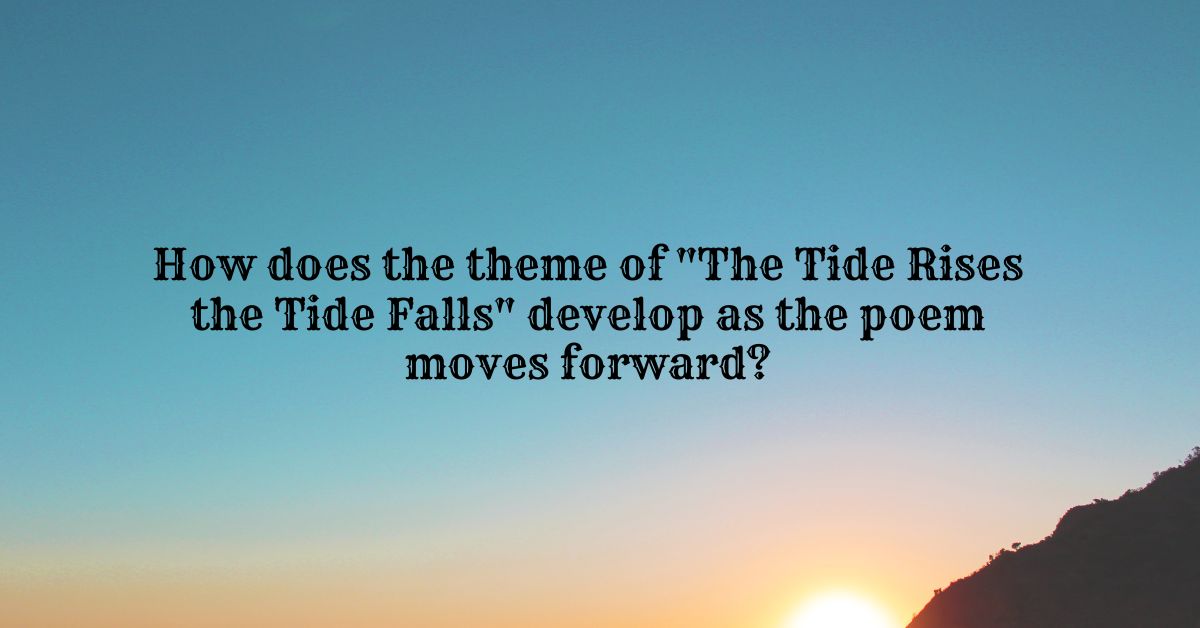Henry Wadsworth Longfellow wrote this poem, “The Tide Rises, the Tide Falls,” in the 19th century, giving it an artistic expression. Henry wrote this poem about the recurring cycle of life. But how does the theme of “the tide rises, the tide falls” develop as the poem moves forward. This is the question that demands a detailed insight into the poem. This article intends to unfold the layers of meanings that enhanced the poem’s thematic strand.
“The Tide Rises, the Tide Falls,” Summary
“The Tide Rises, the Tide Falls” by Henry Wardsworth Longfellow sketches the beauty of eternal tides, which move up and down endlessly on the seashore. It presents us with the narrative of an old traveler who is close to death. The poem begins by showing the constant rise and fall of the tides along with the dark evening. Then, to break this serenity, a traveler appears in the scene; he hurries along the wet sand making his way to the nearby town.
Soon, darkness falls on the town, where the traveler went, but the tides’ movement continues even during the dark. Moreover, small waves silently approach the shore and erase the footprints of that traveler. As the poem goes on, the writer shows that the world welcomes a new day when the sun appears in the sky. Almost everything remains the same, but the traveler never returns to the shore. However, the movement of the tide remains the same; it goes in and out in the same motion.
The theme of “The Tide Rises, the Tide Falls.”
The description shows themes like the transience of life, mortality, and the mesmerizing natural world. The writer presents the immortality of humankind in contrast to the mortality of the tide. The writer has captured beautiful natural scenery in the poem, showing its eternal beauty and continuous movement that remains the same no matter what happens. However, the disappearance of the traveler in the dark stands for the inevitability of death as well as the brevity of human life.
The writer neither specifies the location of the seashore nor the name of the town. Also, he does not provide any information about the traveler. This strange and vague representation itself helps promote the theme of the poem. The traveler’s journey shows our attitude toward life; most of the time, we are in a hurry. We tend to accomplish the desired tasks because we all know that every living creature is destined to die, and so is the traveler of this poem. He sprints to the town. However, the darkness, erasing of the traveler’s footsteps, and his disappearance convey double meanings.
Undoubtedly, his travel to the dark town shows that he was standing on the edge of death. Similarly, the same movement suggests that livings don’t know what happens after death. They simply recall the way a person had lived on the face of this earth, but once he leaves for eternal abode, he drops so many questions for the livings.
Conclusion
Thus, the philosophy of life and the mystery of death are clearly presented in this poem. However, I hope the question, how does the theme of “The Tide Rises, the Tide Falls” develop as the poem moves forward? is aptly answered in this article.
Suggested Articles


